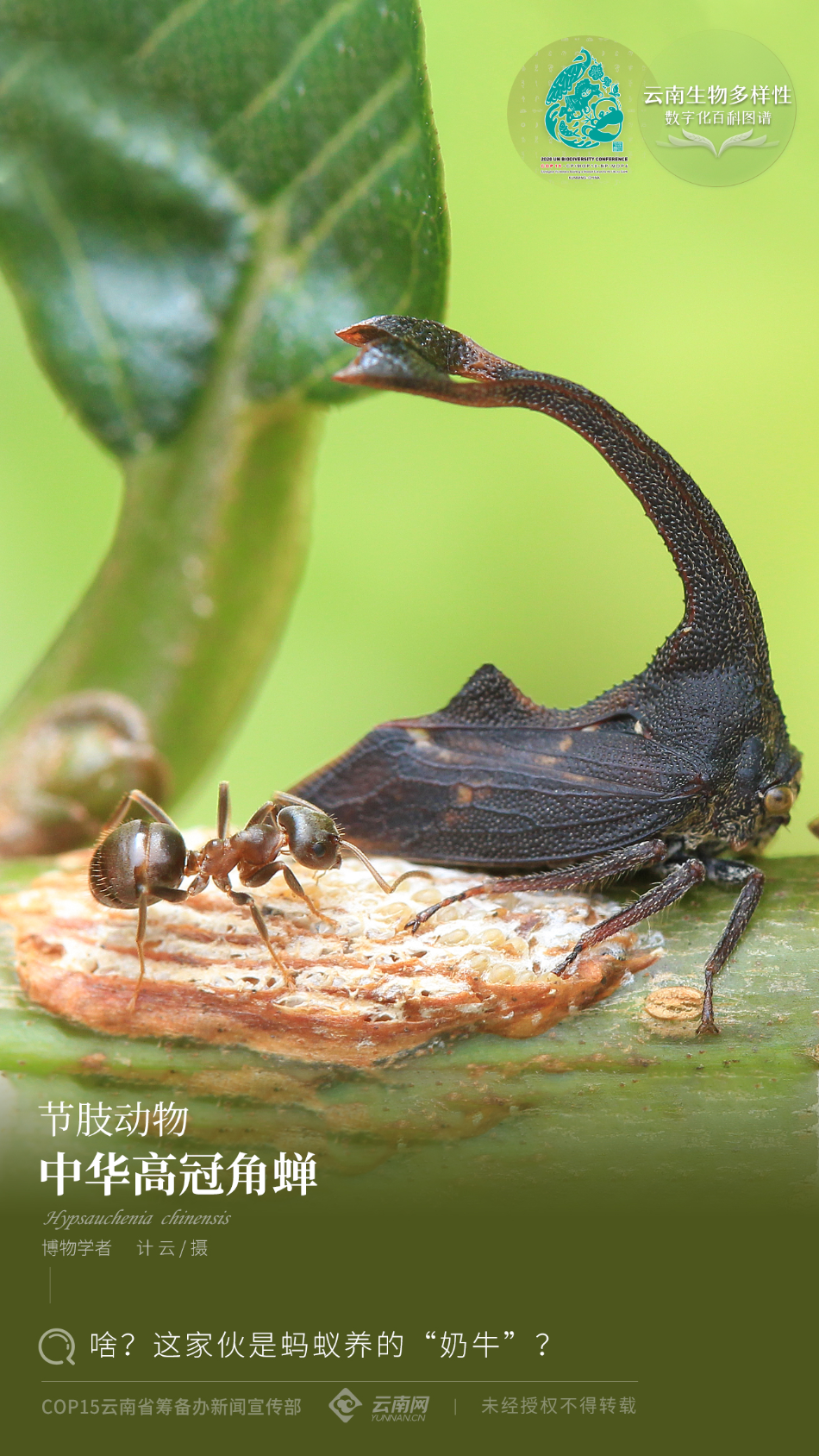
Chinese high-crested horned cicada
Hypsauchenia chinensis
Chinese high-crested horned cicada, belonging to arthropods, insects, homoptera, horned cicada family, horned cicada genus. Also known as stingrays, it is found in woodlands with warm climates and mainly harms oak plants and apple trees. It is distributed in Yunnan, Guizhou and Sichuan. Photo taken in the Nu River.
The Chinese high-crested horned cicada is only about 1 to 2 centimeters in size. For incompletely metamorphosed insects, the nymphs except the head of the other parts of the body are roughly equivalent to the body structure of the adult insects, the difference is that the nymphs have small sharp horns or bulges on the head, while the adult head grows longer horns and flying wings.
When feathered into an adult, its body color is dark brown and biased toward brown, and it can be clearly seen in macro lenses with light light hairs and loose brown bristles. Males and females are morphologically similar, but smaller and lighter in color.
The horns of the adult head are the most eye-catching places of the Chinese high-crowned horned cicada. The entire horn is connected to the head and occupies almost half of the body, and there is a "Y" shaped fork at the corner tip, which is very exaggerated in terms of the length, curvature and size of the corner.
As one of the pests of agriculture and forestry, the Chinese high-crowned horned cicada suction mouthpiece can suck the sap of the branches, resulting in the weakening, drying and even fruit loss of the plant due to malnutrition. Moreover, the harmful fungi carried by the insects themselves can also infect plants with fungal diseases and induce soot disease, which in severe cases can lead to plant death.
When you see this photo, do you feel that ants are hunting Chinese high-crowned horned cicadas? In fact, this is ants "animal husbandry", just like we humans livestock cows. In nature, when the Chinese high-crested horned cicada sucks the sap of the tree, it will excrete the excess part of the body, forming a sweet droplet, called honeydew. Ants especially like sweet food, which makes the ant and the Chinese high-crowned horned cicada form a relationship similar to that of herders and cows, usually ants smoke honeydew excreted by horned cicadas, and will also protect horned cicadas from predators.
Ji Yun, photographer, naturalist, and popular science writer, author of "Beijing Nature Observation Manual: Insect Volume", "Nujiang Gaoligong Mountain Nature Observation Handbook" and other books; the initiator of the "National Astronomical Phenomenon Collection" project of the China Astronomical Image Library, discovering hundreds of new recorded species or new species in China, dozens of new recorded astronomical phenomena in China; scientific consultant of the CCTV documentary group.
Planning coordinator: Zhao Juan Lian Huiling
Character arrangement: Tamoto
Poster Design: Zheng Biyin
Open the treasure house of biodiversity, let Yunnan go to the world, let the world know Yunnan!
We are also eagerly looking forward to your participation, if you have taken wonderful species photos in Yunnan, welcome to submit, once hired, the contribution fee is excellent.
Posting method:
Send the photo to the mailbox [email protected] and leave the author's contact information.